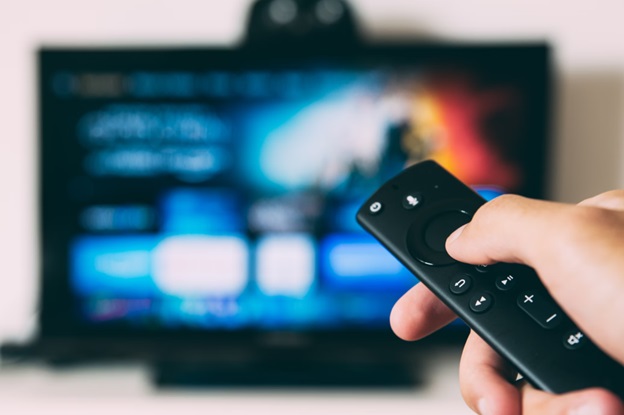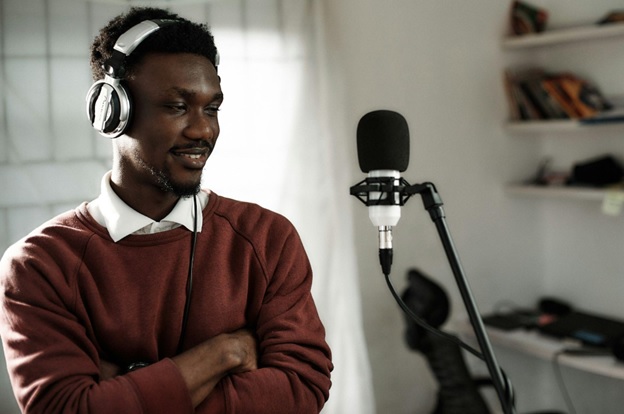According to recent research, multilingualism is on the rise in the United States. In fact, it is currently believed that roughly 20% of all Americans speak at least two languages, and that number is only expected to grow in the coming years. Factors like immigration and globalization in the digital age have contributed to this shift towards multilingualism, and recent advances in technology have further elevated our communication capabilities to new heights.
With this in mind, today’s business leaders and content creators must consider and embrace new solutions to help them communicate more effectively with geographically diverse and multilingual audiences. One tool in the creator’s arsenal is dubbing.
Dubbing the audio of media like videos and podcast episodes can deliver more accessible and engaging experiences to audience members who are engaging with content in a non-native language. Let’s discuss the basics of audio dubbing and explore some of the benefits of incorporating this solution into your content strategy.

Dubbing vs Subtitles: What’s the Difference?
In today’s market, most creators and audience members are already familiar with popular accessibility solutions like captions and subtitles. Captioning refers to the process of converting audio to on-screen text that gets displayed in real time in a video’s viewing window. Captioning can be a valuable tool not just for multilingual audience members, but for individuals with certain disabilities. For example, audience members who are deaf or hard of hearing benefit significantly from the presence of accurate captions because captions provide viewers with an alternative means of engaging with information that was originally shared audibly.
Subtitling is a variation of captioning that is primarily used to provide on-screen translations of dialogue. Subtitles don’t typically include textual representations of non-speech audio elements like sound effects or music cues and instead focus on the spoken text of the video. While subtitles can be a great resource for multilingual audience members, their limited scope makes them ill-suited for supporting accessibility guidelines like the ACA and WCAG. For this reason, creators who are looking to ensure their content and communications are both accessible and inclusive should invest in a high-quality captioning solution rather than a subtitling tool.
But what about audience members who need or prefer to engage with information in an auditory format? Some multilingual audience members may be, for various reasons, unwilling or unable to read the on-screen subtitles or captions provided by a creator or media hosting platform. Consider, for example, audience members who are blind or have low vision. Many audience members with vision loss who consume content in a non-native language need to be able to hear the translation of the content rather than read it on their screen.
That’s where dubbing comes in. When a video is dubbed, the original dialogue is replaced with a translated version that has been recorded by voice actors and meticulously synced to the original video. In addition to providing equitable content experiences for multilingual viewers, dubbing a video into multiple languages can help to ensure greater accessibility for global viewers with disabilities.

The Dubbing Process in a Nutshell
The dubbing process consists of a few different steps that must be completed meticulously and accurately to ensure the quality of the final dubbed audio. Let’s break it down into 5 easy steps:
Step 1 – Translation: A professional translator reviews the original content and translates it into the target language. It is important to hire trained professionals to complete translation projects to ensure maximum accuracy.
Step 2 – Script Adaptation: The translated version of the script undergoes adaptation to ensure lip-sync compatibility. Some translations may need to be tweaked to ensure the written dialogue fits within the existing space of a video and lines up with the original actor’s performance or to account for subtle cultural idiosyncrasies like colloquialisms, etc.
Step 3 – Voice Casting: Actors are hired to perform the translated script.
Step 4 – Recording: Actors record the script, typically in a professional studio environment where they can watch the video in real time and align their delivery with the original performance to the best of their abilities.
Step 5 – Editing and Mixing: The recorded audio is edited and mixed to ensure the sound quality is consistent and the final product is well-timed with the video content.
Throughout the process, it is important that quality assurance remains a high priority for creators and their teams. Inaccurate translations, poor audio quality, and imperfect audio syncing can all negatively impact the viewing experience for multilingual viewers, as well as for audience members with certain disabilities or specific learning needs.

Are There Different Types of Dubbing?
While there are certainly standard approaches to audio dubbing, there are a few variations that creators can consider depending upon the specific needs of their project or audience. Below are some of the most common dubbing types:
- Voice Replacement Dubbing: In this traditional dubbing approach, the original dialogue is replaced with a translated version that is roughly synced to the original performances.
- Lip-Sync Dubbing: This approach focuses on meticulously syncing the dubbed audio to the lip movements of the actors on screen. In some cases, the synchronization is so effective that audience members are almost unaware that they are not hearing the original audio track.
- Voiceover: Voiceover dubbing is not concerned with replacing or syncing the dubbed audio to the degree of the aforementioned approaches. Instead, the volume of the original audio is reduced, and a dubbed voiceover is overlaid on top of the original audio.
- AI Dubbing: New forms of artificial intelligence are capable of replicating human voices with relative ease. Subsequently, creators can use AI-powered dubbing solutions to create translated audio tracks without the need for human voice actors or, in some cases, human translators. However, it is important to keep in mind that artificial intelligence does not always capture the nuances of human speech and communication and may provide less effective content experiences to consumers. AI-generated transcripts and translations also tend to be less accurate than those created with the help of human intervention.
- Human-in-the-Loop Dubbing: This solution combines the efficiency of AI dubbing with the expertise of human translators and voice actors to ensure that final dubbed voiceovers are accurate and emotionally engaging without compromising on speed or cost-effectiveness.
VITAC specializes in harnessing the combined powers of artificial intelligence and human professionals to deliver top-quality audio dubs for a range of media projects. VITAC’s proprietary AI software makes quick work of the translation process and supports multiple languages to help creators save time and money on their dubbing projects. VITAC also partners with translators, studios, and voice actors around the world to ensure that the final quality of a dubbed audio track rivals that of the original and offers the most inclusive, engaging content experience possible to audience members of all backgrounds and abilities.

The Benefits of Dubbing Your Video Content
The benefits of investing in audio dubbing are far-ranging and widely recognized. In addition to making content more engaging for multilingual and global audiences, dubbing is also a critical tool for ensuring maximum accessibility. Audio dubbing can provide more equitable, engaging experiences to multilingual viewers who are blind or have low vision, for example. Dubbing can also support the needs of audience members with special learning needs and neurodivergent conditions who may find it difficult to read on-screen captions while simultaneously watching video content.
Translating and dubbing your video and audio content in multiple languages can expand your reach and help you build a more diverse, global brand presence. Consumers are more likely to engage with brands that speak their language, so it is vital that today’s business leaders make multilingual support a top priority in their expansion efforts.
It is worth noting that dubbing can be employed for both internal and external communications, which makes it a great tool for companies looking to incorporate video materials into their trainings or other HR processes. Offering these materials in multiple languages can help businesses scale up their global hiring efforts while offering tailor-made support to employees around the world. All these things together can help brands establish themselves as forward-thinking and inclusivity-focused in competitive markets around the world.
Learn More
Dubbing is a valuable tool not just for circumventing language barriers but for supporting audiences of different backgrounds and abilities. There is no one-size-fits-all approach to accessibility, so it is well-advised that business leaders and content creators invest in a wide variety of assistive technologies to help meet the ever-changing needs of their audiences. Whether you’re a filmmaker, content creator, or business owner, incorporating dubbing into your communications and content strategy can help you bolster your global presence and deliver more equitable, consistent messaging across the board.
If you’re interested in learning more about VITAC’s state-of-the-art dubbing process or want to explore additional assistive technologies like captioning, transcription and translation, reach out today to speak to a member of our team.




